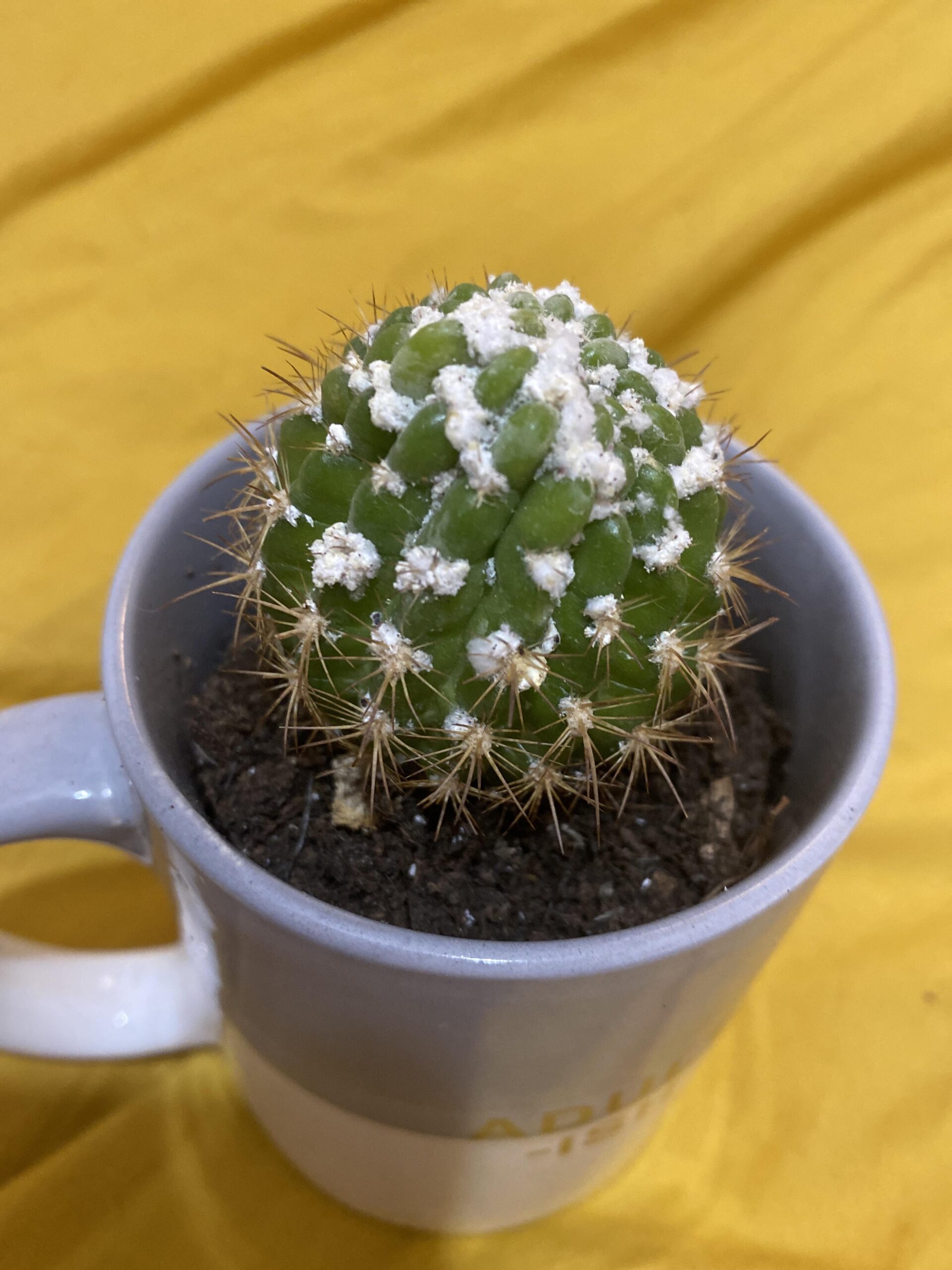Unraveling the Mystery: What Lies Beneath the White Fluff?
Cacti are relatively low-maintenance plants, celebrated for their resilience in arid environments and their striking appearances. However, encountering unexpected issues, such as the emergence of white fluff on your cactus, can leave even the most seasoned plant aficionados scratching their heads. This enigmatic fuzziness can hint at an underlying problem; could it be a harmless occurrence, or does it signal a more serious affliction? Understanding the causes of this phenomenon is vital for effective treatment and ensuring the vitality of your beloved succulents.
The Culprit: Understanding Mealybugs and Woolly Aphids
Primarily, the white fluff that you observe on your cactus is most commonly attributed to two notorious pests: mealybugs and woolly aphids. These small, sap-sucking insects are adept at camouflaging themselves, often masquerading as harmless cottony masses. Their presence indicates a disturbance in your plant’s ecosystem as they feed on the phloem, extracting essential nutrients.
Mealybugs, distinguishable by their white, waxy coating, tend to congregate in clusters, often hidden in the junctions of pads or along the edges of the cactus. On the other hand, woolly aphids exhibit a similar appearance, yet they may leave behind a sticky residue known as honeydew, which can invite further complications, such as sooty mold.
Furthermore, these pests can reproduce quickly, leading to an infestation that can devastate your cactus if left unchecked. The seemingly innocuous white fluffy coating can result in wilting, yellowing, and even death of your cherished plant. Now that we have identified the culprits, how can you combat this pestilence effectively?
Inspection and Isolation: The First Line of Defense
Encountering white fluff on your cactus necessitates immediate action. Begin by conducting a thorough inspection of the affected areas, paying close attention to any clustering of the pests. Isolation of the infested plant is crucial as it prevents the potential spread to your other succulents, which may also fall victim to these insidious creatures.
Once isolated, you are well-positioned to commence treatment. Use a soft brush or cotton swab dipped in rubbing alcohol to gently remove mealybugs or woolly aphids. This method suffocates the pests while limiting damage to the plant itself. Alternatively, employing a pesticide soap can be an effective means to control an infestation. Ensure that the selected product is appropriate for use on cacti, as some solutions may be phytotoxic.
It’s also essential to apply a gentle stream of water to dislodge any remaining eggs or pests from the plant. The thoroughness of your cleaning routine directly correlates to the potential success of your treatment efforts.
Preventative Measures: Safeguarding Your Succulent Sanctuary
After addressing the immediate challenge, consider implementing preventative measures to safeguard against future outbreaks. Begin with an inspection of any new plants prior to introducing them to your collection. This practice helps to mitigate the risk of unknowingly acquiring pests, as infestations can originate from seemingly healthy plants.
In addition, maintaining an optimal environment is paramount. Cacti thrive in dry conditions; however, overly humid environments can create an inviting habitat for these pests. Ensure adequate air circulation and avoid excessive watering, as this can lead to a heightened susceptibility to infestations.
Natural Remedies: Embracing Organic Solutions
If you prefer to adopt a more organic approach to pest management, several natural remedies exist that can aid in the battle against mealybugs and woolly aphids. For instance, a mixture of neem oil diluted with water serves as an effective deterrent while posing minimal harm to beneficial insects. This treatment disrupts the pests’ life cycle, curtailing their reproduction and growth.
Another organic solution involves introducing beneficial insects such as ladybugs or predatory wasps. These natural predators feast on mealybugs and aphids, efficiently reducing their populations. Nevertheless, this method requires careful consideration, as the release of these insects must be conducted in accordance with their ecological compatibility with your surrounding environment.
Monitoring Progress: The Importance of Vigilance
The resolution of your cactus’s white fuzz dilemma may not be immediate. Continuous monitoring is essential to ensure that the infestation has been successfully eradicated. Regularly check the affected areas for signs of regeneration and health, including color restoration and new growth. In the case that the pests persist, be prepared to re-initiate treatment protocols until you successfully reclaim the vitality of your cactus.
In conclusion, while the presence of white fluff on your cactus can appear daunting, it is an opportunity to deepen your understanding of plant care and pest management. By recognizing the symptoms, implementing effective treatments, and embracing preventative measures, you can continue to enjoy the splendor of your cactus collection, safeguarding it against future challenges. Happy gardening!





Leave a Comment